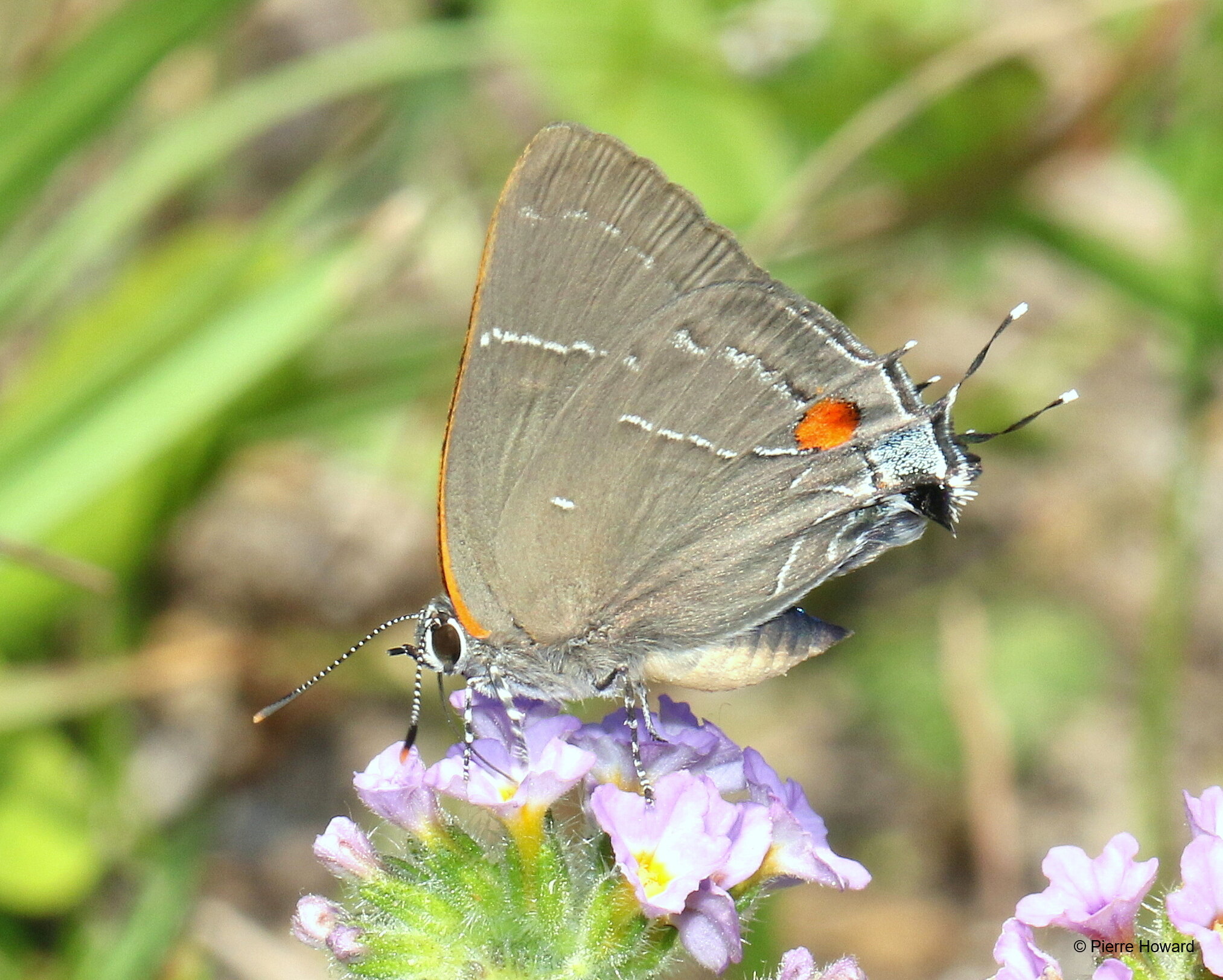White M Hairstreak
Parrhasius m-album
White M Hairstreak was first described from Georgia by Boisduval and LeConte (1829-33). It occurs statewide and is rare in the Mountains, uncommon in the Ridge and Valley and Piedmont and locally common on the Coast. North of the Fall Line, it is usually found in the edges of oak woods near its hostplants including white oak (Quercus alba) and blackjack oak (Quercus marilandica), and in the Coastal Plain it is usually found near its hostplant, live oak (Quercus virginiana). There are two broods in Mountains, Ridge and Valley, and Piedmont and three broods in the Coastal Plain. The first adults can appear during warm spells in February, with the peak of the first brood in March. In Coastal counties, there are numerous records from late April into early June. In North Georgia, the second brood occurs from late August into October, while on the Coast the second and third broods fly from July to November. Early Date: February 19 (Baker County, SW GA); Late Date: November 1 (McIntosh County). Conservation Status: Secure.
Identification: Ventral: There is a red spot that juts out away from the edge of the lower HW so that it is not aligned with the blue spot. The red spot has little to no black. There is a small lone white mark along the inner HW costa. The white PM line forms a distinct “M” beginning at the lower end of the red dot with the apex of the “M” below the blue dot. Dorsal: Iridescent dark blue with black edges.











